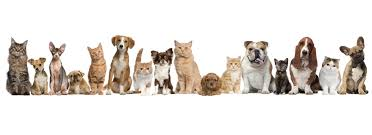Now Genetically Design your Animals before Breeding
Now You can design your own Animals before Breeding
Pig 26 was
engineered to have a gene making it immune to African swine fever. (Thinkstock)
Scientists from the laboratory which
created Dolly the cloned sheep have now produced a disease-resistant piglet
using a new technique which is simpler than cloning, paving way for genetically
modified meat.
The piglet called "Pig 26" is the first animal to be
created via "gene editing". It was born four months ago at
Edinburgh's Roslin Institute, where Dolly the cloned sheep was created in 1996.
The new technique, which is faster and more efficient than
existing methods, can alleviate major concerns of anti-GM campaigners because
it does not involve the use of antibiotic-resistance genes, The Telegraph
reported.
Scientists hope it could make genetic engineering of livestock more
acceptable to the public and be key to the challenge of feeding the growing global
population.
"Gene-editing" is a simple and precise process whereby
researchers snipped the animal's DNA and inserted new genetic material, in
effect changing a single one of the three billion "letters" that make
up its genome.
It has a success rate of ten to 15 per cent, compared with less
than one per cent for existing methods, and can be performed on a fertilized
egg without the need for complicated cloning techniques.
The process mimics a natural genetic mutation so closely that it
would be impossible to tell from examining the animal's DNA whether or not it
had been artificially modified, researchers said.
"Unless you had an audit trail of how that animal was formed,
you would have no way of knowing how that mutation happened. It could have
happened naturally, or in this case been engineered by a DNA editor,"
Professor Bruce Whitelaw from Roslin said. "We can get rid of antibiotic
resistance and for some situations we can get rid of cloning as well. I think
cloning does have some baggage attached to it," Whitelaw said.
Pig 26 was engineered to have a gene
making it immune to African swine fever, a virus which can kill European pigs
within 24 hours of infection.
The gene was taken from wild African pigs, which are naturally
immune to the virus but which cannot breed with European species. Whitelaw said
similar techniques could be used to make other livestock such as cattle and
sheep immune to a host of diseases.
He added that the new form of "clean" genetic engineering has
attracted interest from a number of commercial companies and that international
regulators were already considering how to classify it.
Let us discuss what will happen to out economic system in rural areas:
Friends, Now with the combination of the following technology like:
- Sexing of semen to produce the animal with a sex of your choice
- Disease free cloning of Animals
- Immunization of animals
- Liquid feed and dosing system
We can get male pig or female pig what every we want free from many fatal diseases which can grow at the rate of 1 kg per day. If any farmer is having 20 pigs and all are growing at the rate of 1 kg per day and cost of the pork in market is say Rs. 300 kg. means the wealth generation is about 3000 per day.
What will happen to poverty alleviation program of government of India. The message is reorient poverty alleviation program with the application of modern science and do the meaningful contribution.
Let us start with North Eastern states of India.
Next round of development will be more wide spread:
- How it will change the seed industry for food production?
- What will be the cost of production in livestock production systems in coming years.
- How animal health and plant protection industry will evolve in coming years.
- What will be labeling laws for such foods?
- How to detect and differentiate the product from these technologies.
Think about it. There is going to be new set of industry which will impact all.
Big Question:
What are the views of NGOs?
Obviously they will oppose because they also have to remain in business and prove their existence under one pretext or the other.
- Can NGOs come out with an action plan to ensure food security for all before opposing any new technologies in the name of environment sustainability and bio-diversity?
- How many NGOs activities are from poor families and their income is in Below Poverty Line categories?
- The action plan of NGOs must include the better income for farmers and food for poor people of the world?
Looking forward for the Food security Plan from NGOs.



Comments
Post a Comment